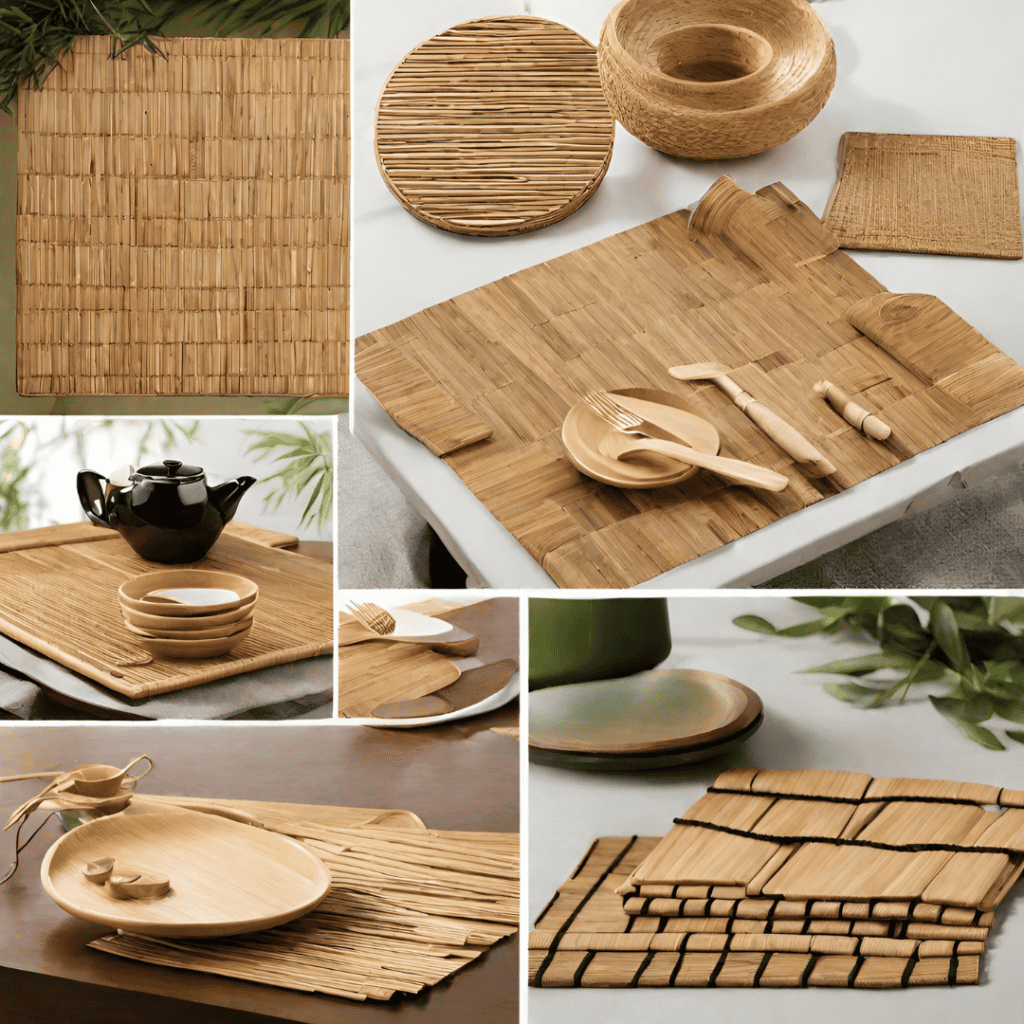Bamboo furniture is renowned for its durability, eco-friendliness, and stylish appearance. Among these, bamboo tables stand out as a stylish and sustainable choice for homes and offices. However, like any other piece of furniture, proper care and cleaning are essential to maintain its beauty and longevity. There is a difference between cleaning and caring for bamboo tables. Cleaning primarily focuses on removing dirt, dust, and stains from the surface, while caring involves nourishing, protecting, and maintaining the overall health and appearance of the bamboo. In this blog post, we will discuss the best practices for a clean bamboo table & caring for it, thus ensuring it remains a stunning and functional piece for years to come.
Contents
Cleaning Your Bamboo Table
Regular Cleaning Routine:
- Dust Regularly: Use a soft, dry cloth or a feather duster to gently remove dust particles from the surface. Dusting should be done at least once a week in order to have a clean bamboo table. Be sure not to press too hard, since this may scratch the surface.
- Wipe Spills Immediately: Bamboo is resistant to moisture, but prolonged exposure can cause damage. Wipe the table from any spills with a damp cloth followed by a dry one.

Deep Cleaning Routine:
- Mild Soap Solution: Once in a while, a deeper clean may be necessary. Use a soft cloth with a solution of mild dish soap diluted in warm water. Also remember to wring the cloth well to avoid excess moisture. Also gently scrub the table, paying extra attention to any problem areas.
- Avoid Harsh Chemicals: Never use strong cleaning agents, because they can strip the bamboo of its natural oils and finish. These can discolor the bamboo table and weaken its structure.
- Dry Thoroughly: Make sure to dry the table thoroughly after each cleaning. Excess moisture can lead to mold and mildew.
Caring for Your Bamboo Table
Protecting the Surface
- Use Coasters and Placemats: Protect the table surface from potential damage by Preventing rings and heat marks. use coasters for drinks and placemats for hot dishes.


- Avoid Direct Sunlight: Prolonged exposure to sunlight can fade the bamboo color. if you are using the table outside door, Position your table away from direct sun, if you are using the table inside door , use curtains to filter the light.
Humidity and Temperature
- Maintain Consistent Humidity: Bamboo can crack in dry environments. Use a humidifier during dry months to maintain a consistent level of humidity. Try to keep humidity level between 40% and 60%.
- Stable Temperature: Extreme changes in temperature can cause bamboo to expand or contract. Keep your home’s temperature consistent.
Dealing with Scratches
- Light Sanding: For minor scratches, lightly sand the area with fine-grit sandpaper, following the grain of the bamboo.
- Bamboo-Specific Products: Clean bamboo tables require nourishment to maintain their health and appearance. Consider Using bamboo-specific polish or wax every few months. This can help bamboo table to restore its shine and provide a protective layer. Follow the manufacturer’s instructions for application, ensuring an even coating across the entire surface.

Professional Help
- Annual Check-Up: While most minor damages can be addressed at home, more significant issues may require professional assistance. Consider having a woodworker or furniture specialist to inspect your bamboo table annually. They can address any potential issues before they become major problems. They will recommend the best course of action to restore your table to its former glory.
Conclusion
By following the cleaning and proper care guide mentioned, your bamboo table can remain a beautiful and sustainable centerpiece in your space for years to come. Remember, the key is consistency and using the right products. Happy cleaning!
